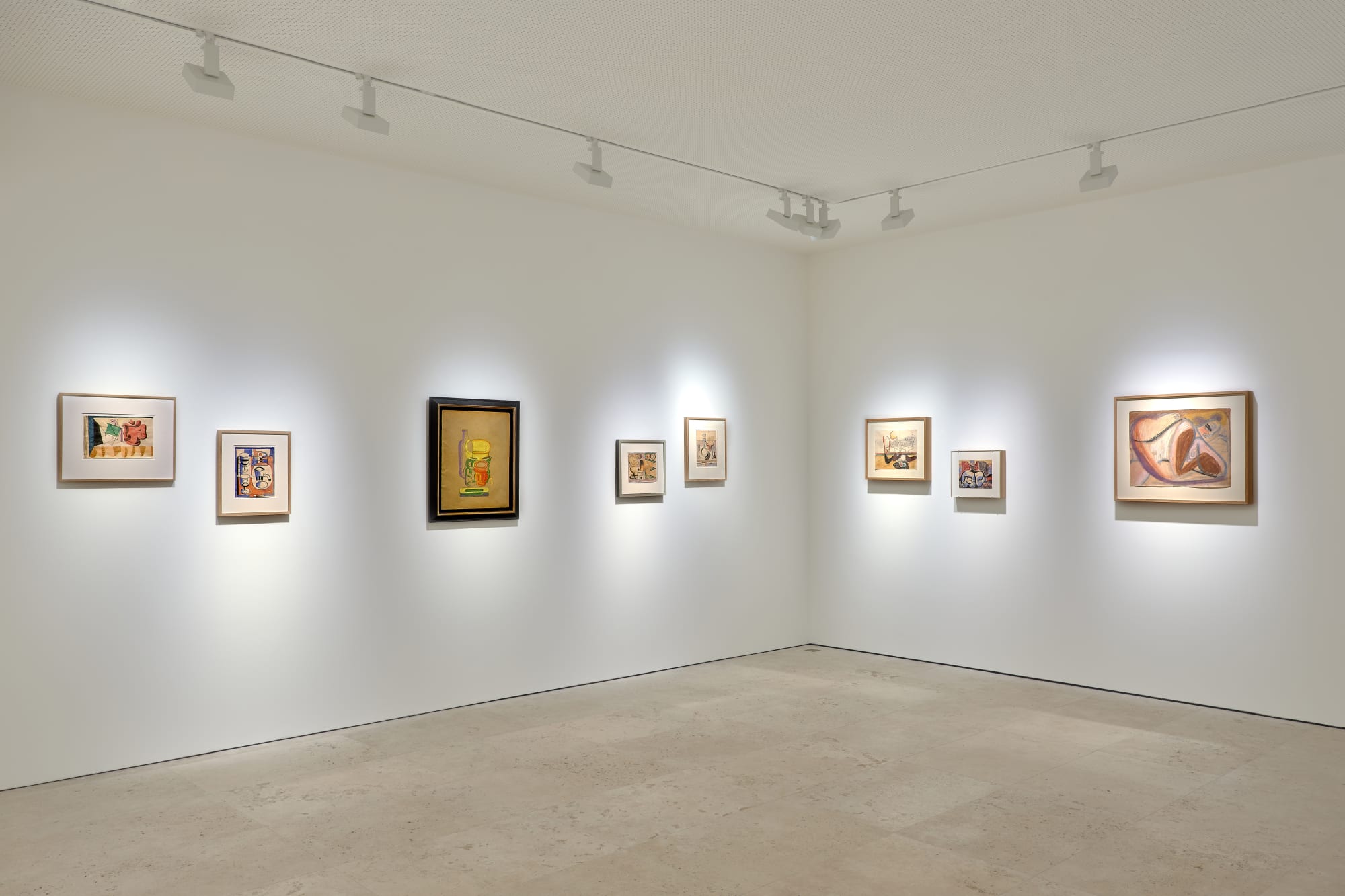The World of Le Corbusier: Collages and Drawings: Le Corbusier
Past Exhibitions exhibition
Overview
"There are no sculptors only, no painters only, no architects only; the plastic incident fulfills itself in an overall form in the service of poetry." - Le Corbusier, 1962
MARUANI MERCIER is pleased to present an exhibition of colourful and expressive works on paper by Le Corbusier. Born Charles-Édouard Jeanneret, the Swiss-born artist and architect better known as Le Corbusier made his name after moving to Paris in 1917. Together with the French painter Amédée Ozenfant he created and led a variation of the Cubist movement called Purism, where objects are represented as elementary forms devoid of detail. After 1925 the movement gave way to melodic figural compositions which would leave a lasting impact on the future generations of Abstract Expressionists.
Le Corbusier's influence has few parallels within the 20th century; his unique and visionary approach to art and architecture established a new modern vision for living that has become an integral part of 21st century life. Drawing remained a central aspect of Le Corbusier's multi-faceted artistic practice throughout his career as a means through which to express himself in a more personal manner, and as a vehicle through which to attain a pure form of poetry. It was an indispensable medium not only for communicating his utopian architectural visions but also for exercising his artistic and purely plastic ideas. His works on paper exhibited at The World of Le Corbusier: Collages and Drawings exemplify the thoughts of the artist in the creative moment.
Combining many relevant features from his developing post-Purist oeuvre, MARUANI MERCIER presents a collection of colorful and expressive works on paper providing a panorama of Le Corbusier's visual lexicon. Having evolved since the rigid and tightly structured Purist compositions, these works incorporate three important themes: still lifes, female figures, and bulls, all surrounded by the ever present elements of interior architecture and landscape. These works provide a view into the arsenal of signs he would develop into a new and distinctive visual language.
From the late 1920s onwards, color burst into Le Corbusier's art and remained one of the most prominent characteristics of his plastic oeuvre. He drew upon this formal tool to construct his compositions, using overlapping and interlocking planes of unmodulated color in complex arrangements. In addition to this, color allowed Le Corbusier to impart a sense of poeticism and harmony into his practice, both artistic and architectural.
From the late 1920s onwards, color burst into Le Corbusier's art and remained one of the most prominent characteristics of his plastic oeuvre. He drew upon this formal tool to construct his compositions, using overlapping and interlocking planes of unmodulated color in complex arrangements. In addition to this, color allowed Le Corbusier to impart a sense of poeticism and harmony into his practice, both artistic and architectural.
Le Corbusier's bulls are the combination of an object with a poetic reaction. In this sense, the bull as the most masculine is juxtaposed with the opposite pole; the female image. Both sides are complimenting each other, integrating the two images.
The quest for visual harmony and synthesis of form begun in Le Corbusier's earliest painted and architectural works continued into his ensuing oeuvre. By the early 1930s, the artist began focusing more on the human form in painting, unifying his prior object-based studies with scenes of women in what became known as his Femmes period. Captivated by Islamic architecture and foreign shapes, objects and structures, the artist was drawn in particular to the elegant curvilinear forms and rhythms found in the arched doorways of Algiers, as well as in the traditional musical instruments like the cymbalum.
This series would prove pivotal to the development of the subsequent generation of Modern artists, influencing the Abstract Expressionists including Willem de Kooning. In his own Women series of the 1950s, de Kooning echoes not only the subject matter of Le Corbusier's earlier works, but also the similarly abstracted and fragmented forms as rendered in mellifluous tones of pink, blue and yellow.
Installation Views
Media
Works
Join our mailing list
* denotes required fields
In order to respond to your enquiry, we will process the personal data you have supplied to communicate with you in accordance with our Privacy Policy. You can unsubscribe or change your preferences at any time by clicking the link in our emails. This site is protected by reCAPTCHA and the Google: Privacy Policy and Terms of Service apply.
























